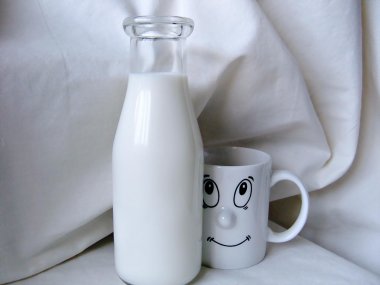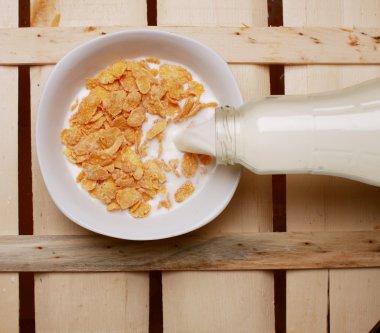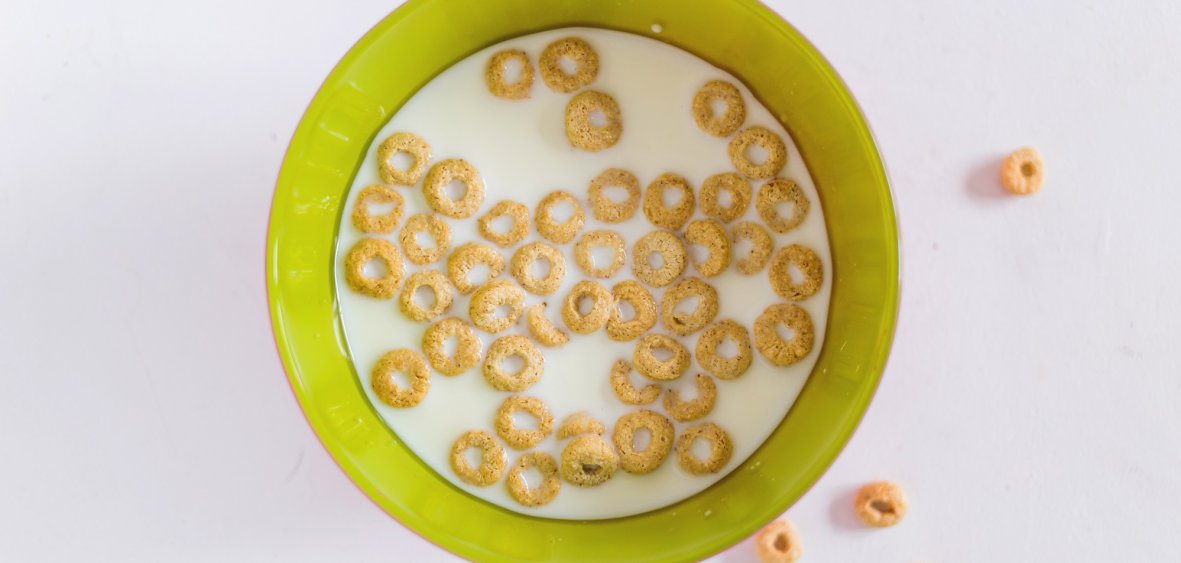If statistics are to be believed, nearly 70% of adults around the world suffer from lactose intolerance. In Poland, this problem may affect as much as 37% of people. In France and Spain, nearly 50% of adults complain about these conditions, while in Asia and Africa, intolerance of milk sugar is extremely common and affects more than 70% of the population.
Lactose - what is it?
 Lactose is sugar contained in the milk of females of most species of mammals. Human milk has a lactose content between 5.5% and 7.5%. Cow's, goat's and sheep's milk contains about 4.5% of this disaccharide, which is not only a valuable nutrient and energy source for newborns and infants of mammals, but also influences the hormonal balance of the developing organism.
Lactose is sugar contained in the milk of females of most species of mammals. Human milk has a lactose content between 5.5% and 7.5%. Cow's, goat's and sheep's milk contains about 4.5% of this disaccharide, which is not only a valuable nutrient and energy source for newborns and infants of mammals, but also influences the hormonal balance of the developing organism.
Lactase enzyme
Milk sugar (lactose) is broken down into monosaccharides - glucose and galactose - by a specialized digestive enzyme - lactase produced in the intestinal mucosa of infants. Only the simple sugars produced as a result of its action can be assimilated by the body. Lactase is most active during infancy and breastfeeding. Later, when maternal milk is replaced by other food, the production of this enzyme is gradually decreasing.
Lactose intolerance - what is it all about?
Lactose intolerance may result from the absence (allactase) or deficiency (hypolactase) of lactase - the enzyme responsible for converting milk sugar to more easily digestible simple sugars - glucose and galactose.
Undigested lactose, which remains in the large intestine for too long, begins to ferment over time with the participation of intestinal bacteria. Acids and gases produced during the fermentation process irritate the intestinal mucosa and are the cause of many ailments of the entire digestive system.

 Lactose intolerance - causes
Lactose intolerance - causes
Lactose intolerance most often results from primary, i.e. hereditary lactase deficiency (adult hypolactase). This type of lactation usually occurs in adults and is rarely observed in children and infants. It most often occurs only at the age of puberty. Only 5% of the activity of this enzyme is observed in a patient compared to a healthy person. Hypolactase of this type is caused by the polymorphism of the lactase gene (LCT). It is a recessive gene.
Congenital lactase deficiency
In the case of congenital lactase deficiency (allactase), symptoms of milk sugar intolerance appear in newborns in reaction to the first contact with breast milk.
Secondary lactase deficiency
Sometimes there may also be a secondary (acquired) lactase deficiency, which also leads to lactose intolerance. Such secondary (temporary or permanent) decreased activity or deficiency of this enzyme may occur after the disease or result from various damage to epithelium and villi. Lactose intolerance can be caused by Leśniowski-Crohn's disease, necrotizing bowel inflammation, short bowel syndrome, Duhring's disease, Whipple's disease or cystic fibrosis. Lactose intolerance also occurs after various gastrointestinal infections. It may occur, for example, after acute or chronic diarrhoea caused by Escherichia Coli or Salmonella bacteria, rotaviruses and adenoviruses, or by intestinal parasites, including lambs and tapeworms.
Celiac disease, cystic fibrosis and various food allergies, such as an allergy to cow's milk protein or protein contained in soya beans, can also lead to lactose intolerance.
Damage to epithelium and intestinal villi may also occur after some drugs, especially antibiotics, non-steroidal anti-inflammatory drugs, chemotherapeutics and after the use of acetylsalicylic acid. It may also occur after alcohol and as a result of ionizing radiation. It also appears in case of malnutrition.
Lactose intolerance in infants
 Premature babies born before 34 weeks of age may experience developmental lactase deficiency, i.e. temporary intolerance to milk sugar. Organisms of such children are not yet able to produce lactase on their own. The problem disappears when the production of this enzyme begins in the intestines. Lactose intolerance can also be caused by a long-term milk-free diet, which over time leads to a reduction in lactose secretion.
Premature babies born before 34 weeks of age may experience developmental lactase deficiency, i.e. temporary intolerance to milk sugar. Organisms of such children are not yet able to produce lactase on their own. The problem disappears when the production of this enzyme begins in the intestines. Lactose intolerance can also be caused by a long-term milk-free diet, which over time leads to a reduction in lactose secretion.
Lactose intolerance - symptoms
The symptoms of this food intolerance are non-specific, i.e. they resemble the symptoms of many other diseases of the digestive system. In case of lactose intolerance diarrhoea and flatulence, abdominal pain, colic, nausea and vomiting may occur. The severity of all symptoms largely depends on the amount of milk sugar consumed and the degree of deficiency of the enzyme which decomposes this sugar. Much also depends on the form in which the food containing lactose was consumed. Sometimes the symptoms appear even several hours after consumption of food containing this sugar, which makes it very often impossible for patients to associate their ailments with the consumption of milk products or milk.
Lactose intolerance and diet
In the case of lactose intolerance, symptomatic treatment, i.e. simply an elimination diet, is applied. This type of diet is used both in newborns and infants, as well as in children and adults who are not able to break down lactose on their own. Depending on the severity of symptoms, age and form of lactose intolerance, a partial reduction in the consumption of milk and milk products or a complete lactose free diet may be recommended.
 Diet with lactose intolerance - principles
Diet with lactose intolerance - principles
People with primary and secondary (i.e. acquired) lactase deficiency are not always forced to completely give up milk and milk products. Sometimes it is enough to know your permitted limit and consume these foods in specific quantities. If the symptoms of intolerance to lactose are particularly troublesome and exacerbated, then, unfortunately, products containing lactose must be completely eliminated from the diet. Patients with congenital lactase deficiency are forced to be on a lactose free diet all their lives. They do not tolerate even the smallest amounts of milk sugar in food, and failure to follow a diet can be particularly dangerous for them and even endanger the life of the sick person.















